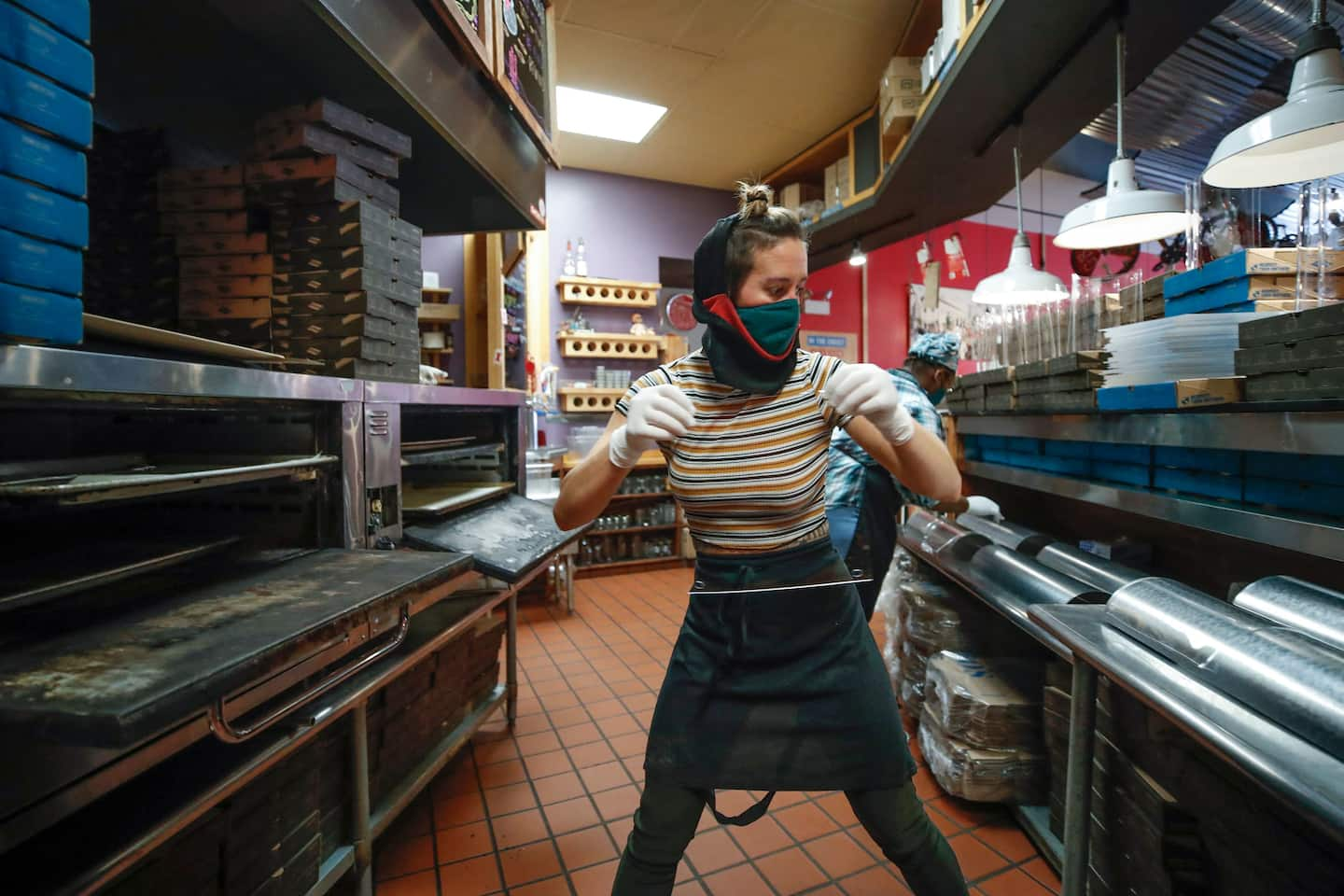Steep drop in jobless claims, soaring retail sales buoy hopes for a robust recovery

Meanwhile, fresh Commerce Department data showed retail sales soared 9.8 percent in March as stimulus checks hit bank accounts, business restrictions loosened and spring weather arrived. The better-than-expected jump comes on the heels of a 2.7 percent decline in February.
“Stellar jobless claims plus off the charts retail sales packs a positive one two punch and sends strong signals that the economy is full steam ahead toward recovery,” Mike Loewengart, managing director of investment strategy at E-Trade, said Thursday in comments emailed to The Washington Post. “While we haven’t necessarily seen the market move on strong economic beats or misses, it’s certainly a step in the right direction.”
The news, coupled with strong earnings from major banks, spurred a jubilant day of trading on Wall Street. The Dow Jones industrial average surged 305.10 points, or 0.9 percent, to a record high of 34,035.99. The S&P 500 jumped 45.76 points, or 1.1 percent, to settle at 4,170.42, also a record. The tech-heavy Nasdaq composite index swelled 180.92 points, or 1.3 percent, to close at 14,038.76.
Citigroup and Bank of America both beat analyst expectations with their first quarter results, but Bank of America’s stock shed more than 3 percent as investors reacted to the bank’s pandemic-related expenses and weaker-than-expected net interest income and loan growth. Citgitroup’s stock slid 0.8 percent after the bank announced it would shutter much of its retail banking operations outside the United States.
“Although 34,000 by itself is just another number, this is a monumental feat when you think back to where we were last year at this time,” Ryan Detrick, chief market strategist for LPL Financial, said in comments emailed to The Post. “The speed and resiliency of this economic recovery is unlike anything we’ve ever seen and it helps to justify stocks at all-time highs.”
Economists had projected about 710,000 fresh claims last week The week before, some 719,000 Americans applied for unemployment benefits. Now, claims sit at their lowest level since March 2020, when the pandemic began, but still well above pre-pandemic levels.
“Thursday’s elevated jobless claims data is an important reminder that the labor market has not fully recovered from the Covid-19-driven recession,” Vanessa Martinez, managing director of the Lerner Group, a Chicago-based wealth management firm, said in comments emailed to The Post. “There are still millions of people unemployed.”
Last week, an additional 131,975 Americans filed claims for Pandemic Unemployment Assistance, for gig and self-employed workers.
The March retail sales jump is the second-largest on record, according to the National Association of Federally-Insured Credit Unions, coming in behind last May’s historic leap when the first round of stimulus checks reached American households. Retail sales are up 24 percent year-over-year. Curt Long, the NAFCU’s chief economist, predicts gains will continue in the coming months, “fueling the best year of GDP growth since the early 1980s.”
Americans spent big on food and beverages last month, with restaurant sales climbing more than 13 percent as more people returned to dining out. Bookstores and sporting goods retailers saw their sales climb 23.5 percent, while clothing sales rose 18.3 percent.
“Car sales were particularly strong in March, as were traditional spring categories such as home and garden supplies and sporting goods,” Ted Rossman, senior industry analyst at CreditCards.com, said Thursday in comments emailed to The Post. “We also saw evidence that many consumers are more comfortable returning to restaurants and bars. And buying clothes in the anticipation of getting out of the house more.”
Still, Rossman warned, retailers are “being propped up by stimulus.”
The pandemic’s disruption has created inescapable financial strain for many Americans. Nearly 40 percent of have postponed major financial decisions, from buying cars or houses to getting married or having children, due to the coronavirus crisis, according to a survey last week from Bankrate.com. Among younger people, ages 18 to 34, 59 percent said they had delayed a financial milestone.
Hope remains that the pace of recovery will pick up as vaccinations and business activity increase. More than 23 percent of Americans are fully inoculated against the coronavirus, according to the Centers for Disease Control and Prevention, and 37 percent have received at least one dose.
“So far, the vaccine rollout has been hugely successful and has increased consumer confidence as people now have peace of mind that they can spend more time in public spaces, including shopping malls, responsibly with little risk to themselves and others,” Marwan Forzley, chief executive of Veem, a payments platform, said in comments emailed Thursday to The Post.
But the recommended pause of the one-shot Johnson & Johnson vaccine could hamper the pace of vaccinations. Favored for transient and hard-to-reach populations, the single-shot pause will probably compound difficulties for those with the fewest other options — adding another hurdle to the Biden administration’s effort to introduce more equity into the national vaccination campaign.
Even as flickers of normalcy return, the damage wrought by the pandemic will be lasting. In a “60 Minutes” interview aired Sunday, Federal Reserve Chair Jerome H. Powell warned reopening the economy too quickly could fuel a resurgence in coronavirus cases, arguing that the country has not completely turned the corner and that the pandemic continues to pose major risks to any recovery. The pandemic, he said, has exacerbated inequalities that are not being healed in the “K-shaped” recovery, because of diverging prospects for the rich and poor.






